Barrenwort Epimedium grandiflorum 'Purple Pixie' (PBR)

ABOUT
Epimedium grandiflorum 'Purple Pixie' is a captivating plant characterized by its unique and attractive foliage and flowers. The leaves are heart-shaped and have a soft texture with a slight spade-like point at the tip. In spring, they emerge with a purplish-bronze hue before transitioning to a lush green as they mature. In the fall, the foliage takes on a bold reddish-bronze color, providing year-round interest in the garden. The flowers of 'Purple Pixie' are particularly noteworthy. They dangle atop slender, wiry stems and boast an enchanting appearance resembling delicate, fairy-like blooms. The flowers have a beautiful shade of lilac or pale purple, with a cupped shape and long, graceful spurs extending backward. They create an airy and whimsical display when they bloom in the spring, and their gentle movement with the breeze adds to the plant's charm. 'Purple Pixie' is often used in garden settings for its charming flowers and appealing foliage, which together provide an array of seasonal colors and a touch of magic to shaded areas of the landscape. The overall appearance of this cultivar is one of subtle beauty and grace, making it a lovely addition for those looking to add a touch of enchantment to their garden palette.
About this plant
 Names
NamesFamily
Berberidaceae.
Synonyms
Barrenwort, Bishop's Hat, Fairy Wings, Horny Goat Weed.
Common names
Epimedium grandiflorum 'Purple Pixie' (PBR).
 Toxicity
ToxicityTo humans
Bishop's Hat (Epimedium grandiflorum 'Purple Pixie') is generally considered to have a low level of toxicity to humans. Ingestion of parts of the plant is typically not harmful, and serious symptoms are unlikely. However, as with many plants, if large quantities are ingested, some individuals may experience gastrointestinal discomfort or an allergic reaction. It's important to remember that sensitivity to plant toxicity can vary widely between individuals.
To pets
Bishop's Hat (Epimedium grandiflorum 'Purple Pixie') is generally recognized as being non-toxic to pets. It is not known to cause harmful effects if pets ingest parts of this plant. Nevertheless, it's always a good practice to monitor your pets around plants and discourage them from chewing on any plant material, as individual reactions can vary, and to prevent potential GI upset from non-food items.
 Characteristics
CharacteristicsLife cycle
Perennials
Foliage type
Deciduous
Color of leaves
Green
Flower color
Purple
Height
1 foot (30 centimeters)
Spread
2 feet (60 centimeters)
Plant type
Herb
Hardiness zones
5
Native area
Japan
Benefits
 General Benefits
General Benefits- Attractive Flowers: Epimedium grandiflorum 'Purple Pixie' features eye-catching purple flowers that enhance garden aesthetics.
- Shade Tolerance: This plant is capable of thriving in shaded areas where sunlight is limited.
- Ground Cover: Its growth habit provides an excellent ground cover, suppressing weeds and reducing garden maintenance.
- Drought Resistance: Once established, it exhibits a good level of drought tolerance, requiring less frequent watering.
- Cold Hardy: It is capable of withstanding colder climates, making it suitable for gardens in temperate zones.
- Deer and Rabbit Resistant: The plant is less appealing to deer and rabbits, minimizing the risk of grazing damage.
- Long Blooming: Epimedium grandiflorum 'Purple Pixie' has a long blooming season, providing prolonged visual interest.
- Low Maintenance: It generally requires minimal upkeep beyond occasional pruning and watering during dry spells.
- Soil Versatility: Adapts to a variety of soil conditions, though it prefers moist, well-drained soil.
 Medical Properties
Medical Properties- Libido Enhancement: Epimedium, commonly known as Horny Goat Weed, is traditionally used to enhance sexual function and libido.
- Osteoporosis Prevention: Compounds in Epimedium may help increase bone density and are considered in the management of osteoporosis.
- Anti-Inflammatory: The plant has been known to have anti-inflammatory properties which could be beneficial in reducing inflammation.
- Erectile Dysfunction: Epimedium is thought to have phosphodiesterase inhibitory effects, which are used in the treatment of erectile dysfunction.
- Immune System Support: Some practitioners use Epimedium to boost the immune system, although this use is less documented.
 Air-purifying Qualities
Air-purifying QualitiesThis plant is not specifically known for air purifying qualities.
 Other Uses
Other Uses- Floral Arrangement – Epimedium 'Purple Pixie' can be used as a source of unique filler foliage in floral arrangements, providing a delicate and unusual texture to bouquets.
- Photography Subject – Gardeners and photographers may use 'Purple Pixie' as a subject for macro photography due to its intricate flowers and leaves.
- Dye Source – The leaves of 'Purple Pixie' can be used to produce a natural dye for fabrics or artistic projects.
- Fairy Gardens – The whimsical appearance of 'Purple Pixie' lends itself to use in fairy and miniature gardens as ground cover or as a thematic plant.
- Culinary Garnish – Edible flowers from the Epimedium can be used as a subtle garnish for desserts and specialty dishes.
- Leaf Castings – Gardeners can use the leaves of 'Purple Pixie' to make decorative concrete or plaster castings for garden ornaments.
- Artistic Inspiration – The unique form and color of 'Purple Pixie' can serve as inspiration for artists and designers looking for organic shapes and natural color palettes.
- Education – 'Purple Pixie' can be utilized in educational gardens to demonstrate plant adaptation and survival strategies such as shade tolerance.
- Living Mulch – The dense foliage of 'Purple Pixie' can help retain soil moisture and suppress weeds, acting as living mulch in garden beds.
- Erosion Control – The spreading habit of 'Purple Pixie' makes it suitable for planting on slopes or in areas prone to erosion, helping to stabilize the soil.
Interesting Facts
 Feng Shui
Feng ShuiThe Bishop's Hat is not used in Feng Shui practice.
 Zodiac Sign Compitability
Zodiac Sign CompitabilityThe Bishop's Hat is not used in astrology practice.
 Plant Symbolism
Plant Symbolism- Longevity and Vitality: Epimedium grandiflorum 'Purple Pixie', commonly known as Barrenwort, is often associated with longevity and vitality due to its use in traditional herbal medicine to promote good health and long life.
- Sexual Health: Barrenwort has a history in traditional medicine as an aphrodisiac, symbolizing improved sexual health and the treatment of erectile dysfunction.
- Adaptability: Its ability to thrive in various soil conditions and shade levels speaks to its symbolism of adaptability and resilience in different life circumstances.
- Fertility: The plant's use in traditional practices for fertility issues makes it a symbol of fertility and reproductive strength.
- Protective Charm: In some cultures, Barrenwort is considered a protective charm against negative forces and evil spirits, symbolizing safety and protection.
 Water
WaterFor Bishop's Hat, water the plant moderately by soaking the soil when the top inch feels dry, roughly once a week, depending on the climate. During the growing season in spring and summer, they might need water more frequently, while in the fall and winter, reduce watering as the plant goes dormant. Provide about half a gallon per watering session for an average-sized plant, ensuring you don't waterlog the soil, as this could lead to root rot. It is essential to maintain consistent moisture but not to overwater, as Bishop's Hat prefers well-drained conditions.
 Light
LightBishop's Hat thrives best in partial shade to full shade, making it an excellent choice for a shaded garden spot or an area underneath larger plants or trees. Avoid direct, harsh sunlight, as this can scorch the leaves of the plant. A north-facing garden or the dappled light under a canopy of trees provides the ideal lighting conditions for this perennial.
 Temperature
TemperatureBishop's Hat prefers a temperature range between 50°F and 75°F for optimal growth. They are hardy in USDA zones 5 through 9, which means they can survive winter temperatures down to -20°F. Avoid exposing Bishop's Hat to temperatures above 80°F, as they may not tolerate extreme heat well.
 Pruning
PruningBishop's Hat benefits from pruning to remove any dead or damaged foliage and to maintain an attractive shape. The best time to prune is in late winter or early spring before new growth begins. Prune lightly, as heavy pruning is not necessary; focusing on tidying up the plant annually should suffice.
 Cleaning
CleaningAs needed
 Soil
SoilBishop's Hat thrives in well-draining, humus-rich soil with a pH between 5.5 to 7. For a favorable mix, combine organic compost, peat, and perlite. Mulch annually to maintain moisture and nutrient levels.
 Repotting
RepottingBishop's Hat typically requires repotting every 2-3 years. The best time to repot is in early spring before new growth begins.
 Humidity & Misting
Humidity & MistingBishop's Hat prefers moderate to high humidity. Aim for humidity levels around 50% for optimal growth, avoiding environments that are too dry.
 Suitable locations
Suitable locationsIndoor
Place Bishop's Hat in bright, indirect light and maintain moderate humidity.
Outdoor
Plant Bishop's Hat in partial shade and shelter from harsh sun.
Hardiness zone
5-9 USDA
 Life cycle
Life cycleEpimedium grandiflorum 'Purple Pixie' (PBR), commonly known as Purple Pixie Barrenwort, begins its life cycle as a seed, which upon germinating in spring, develops into a young seedling. The seedling grows by producing heart-shaped leaves and an expanding root system. As it matures, the plant forms rhizomes that enable it to spread and perennialize. In early to mid-spring, the Purple Pixie Barrenwort produces distinctive purple flowers that attract pollinators, after which it enters a vegetative growth phase in summer. In fall, the foliage may turn to impressive autumnal hues, signaling a dormancy period during the winter months. Throughout its lifetime, this perennial plant regenerates each spring, continuing its cycle for many years with proper care.
 Propogation
PropogationPropogation time
Spring to summer
The most popular method of propagating the Epimedium grandiflorum 'Purple Pixie', more commonly known as 'Purple Pixie' Barrenwort, is by division. This is typically done in the spring or fall when the plant is not in active growth. To propagate by division, carefully dig up the parent plant, preserving as much of the root system as possible. Gently separate the plant into smaller clumps, ensuring that each division has a good portion of roots and shoots. Replant the divisions into well-draining soil at the same depth they were originally growing, spacing them about 12 to 15 inches (approximately 30 to 38 centimeters) apart. Water thoroughly after planting to help establish the divisions. This method is ideal for expanding your garden or sharing with fellow gardeners.

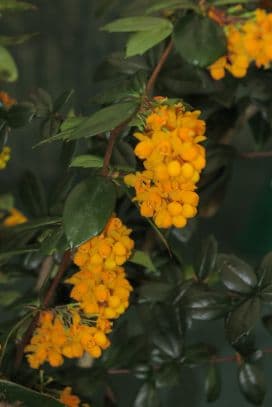
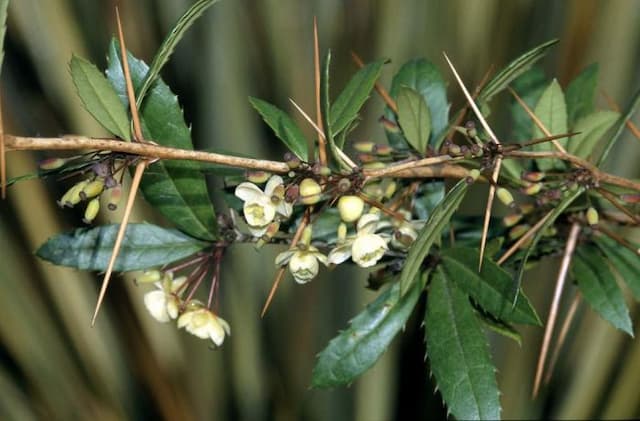
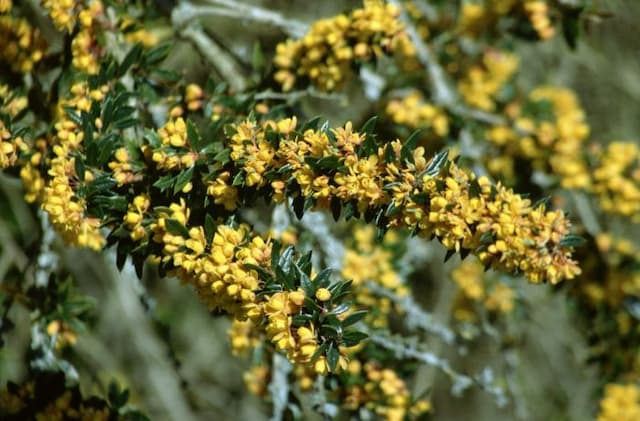

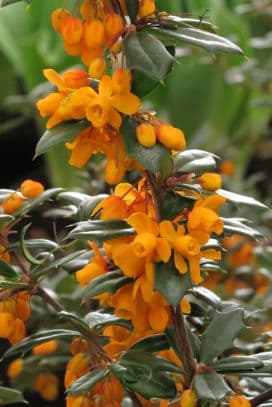
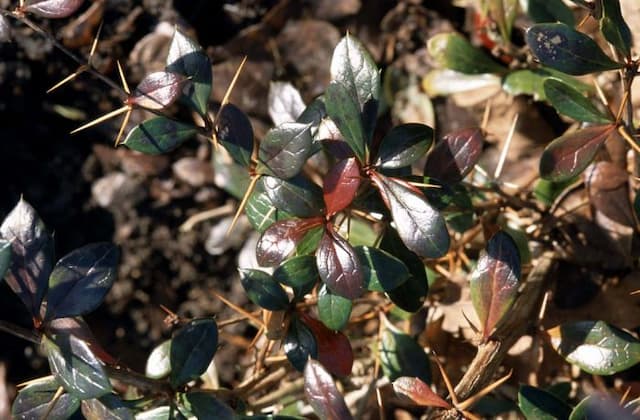


![Japanese barberry [Bonanza Gold]](/_next/image?url=https%3A%2F%2Fplants-admin.emdemapps.com%2Fimages%2Fplants%2F%2Fimages%2F604b5385e413f.png&w=640&q=75)